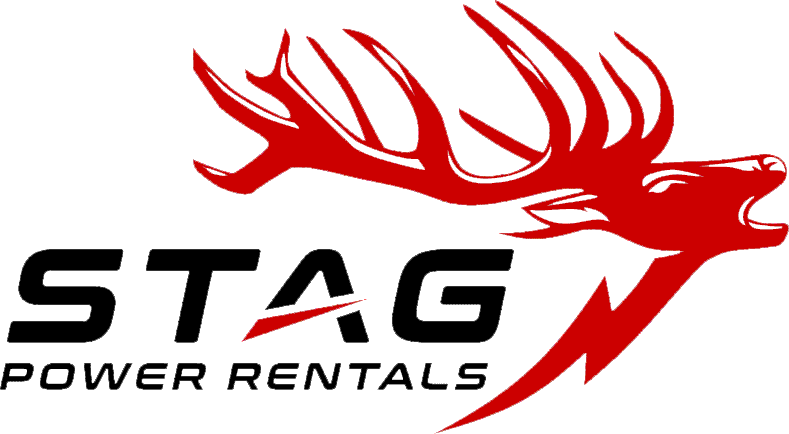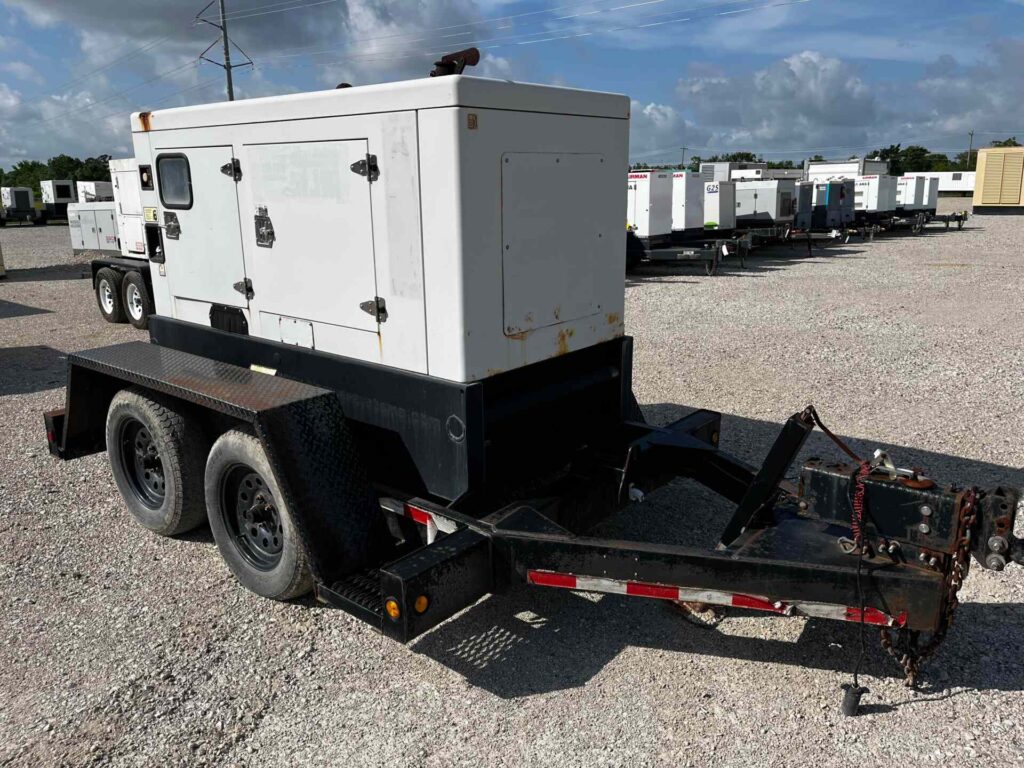When a business relies on high-capacity diesel generators, understanding real-world fuel usage is essential. For companies running industrial facilities, data centers, oilfield sites, or hospitals, fuel efficiency isn’t just about cost savings; it directly impacts operational planning, delivery schedules, and environmental compliance. One of the most common high-output units used today is the 1500 kW diesel generator. But how much fuel does this large-capacity generator burn?
Fuel Consumption of a 1500 kW Generator at a Glance
On average, a 1500 kW diesel generator consumes approximately 107 to 113 gallons of fuel per hour at full load. This rate can vary based on factors like generator brand, age, load percentage, and ambient temperature. At 75% load, consumption drops to around 84–88 gallons per hour, while at 50% load, it may use closer to 58–62 gallons per hour.
| Load Percentage | Approximate Fuel Consumption (GPH) |
| 100% Load | 107–113 gallons per hour |
| 75% Load | 84–88 gallons per hour |
| 50% Load | 58–62 gallons per hour |
| 25% Load | 33–36 gallons per hour |
These estimates are based on common Tier 2 and Tier 4 Final diesel generator models from brands such as Caterpillar, Cummins, and MTU. For planning large-scale operations, actual performance data and testing should always be reviewed before deployment. You can reference our comprehensive industrial generator fuel consumption chart for additional sizing considerations.
What Influences Generator Fuel Efficiency?
Fuel efficiency is never a fixed number. Multiple factors affect how much fuel a 1500 kW generator consumes during continuous or standby operations. These include:
- Load Level: Generators are most efficient between 70%–85% load. Running at low loads for long periods increases fuel waste and engine wear.
- Generator Design: Modern Tier 4 Final generators use advanced emissions systems and fuel mapping for better fuel economy compared to older Tier 2 units.
- Maintenance: Clean filters, proper lubrication, and consistent servicing improve combustion efficiency and reduce wasted fuel. Regular maintenance practices are essential for optimal performance.
- Ambient Conditions: Extreme temperatures and high elevations reduce generator output, which can lead to higher fuel usage to meet load demands. Our guide on using industrial generators in extreme temperatures provides valuable insights for challenging environments.
- Fuel Quality: Water, particulates, or oxidation in stored diesel affects combustion and may cause a rise in hourly consumption rates.
Daily and Monthly Diesel Usage Examples
To better plan logistics, it helps to calculate projected diesel use across various shifts. Assuming an average full-load rate of 110 gallons per hour, here are examples based on daily shift schedules:
| Shift Type | Hours/Day | Fuel/Day | Fuel/Month (30 days) |
| Single Shift | 8 | 880 gallons | 26,400 gallons |
| Double Shift | 16 | 1,760 gallons | 52,800 gallons |
| Triple Shift | 24 | 2,640 gallons | 79,200 gallons |
These figures are helpful for budgeting fuel deliveries, estimating carbon emissions, or planning for emergency backup capacity during natural disasters or utility outages.
Fuel Tank Size and Runtime Planning
Fuel storage is a key factor in managing generator runtime and maintaining uninterrupted operations. A 1500 kW generator can burn through large volumes of diesel quickly, so knowing how long a built-in tank will last helps teams plan refueling schedules and avoid unexpected shutdowns.
- 1,000-gallon tank: Around 9 hours at full load.
- 2,000-gallon tank: Around 18 hours at full load.
For continuous operations, external fuel tanks and automated refueling strategies are often needed. Remote monitoring systems can send alerts for low fuel levels or sudden spikes in usage, reducing downtime risk and helping facility managers stay ahead of supply issues.
Tier 4 Final vs Tier 2 Generator Fuel Use
Many organizations still rely on Tier 2 generators due to availability or cost, but Tier 4 Final units offer better emissions control and often improved fuel performance. Despite the added aftertreatment systems (DEF usage, DPF regeneration), newer engines are engineered to burn cleaner and more efficiently when properly loaded.
Comparative testing shows that under real-world industrial load conditions, Tier 4 generators may consume 2%–5% less fuel per hour when maintained correctly. They also qualify for cleaner air zone deployments and reduce regulatory risk for large-scale contractors.
How to Lower Generator Fuel Costs
Managing the fuel costs of a 1500 kW generator involves more than picking a model. Operational practices can significantly reduce diesel waste and save thousands in recurring fuel charges. Here are a few practices to consider:
- Match Load Profiles: Size your generator to run close to its optimal load zone. Matching generators to power requirements helps ensure proper sizing.
- Avoid Light Loading: Avoid running below 30% load for extended hours, which causes inefficient fuel burn and carbon buildup.
- Track Runtime: Use telematics to monitor idle time and offload unnecessary run hours.
- Schedule Preventive Maintenance: Maintain air and fuel filters, check injection systems, and inspect tanks for contamination regularly. Long-term generator maintenance strategies become critical for extended operations.
- Consider Fuel Additives: For long-term use, additives may improve combustion quality and extend storage life in bulk tanks. Different fuel options for industrial generators can impact overall efficiency.
Industries That Rely on 1500 kW Generator Rentals
A 1500 kW generator is built for demanding environments where continuous, high-capacity power is non-negotiable. These units support mission-critical systems in sectors that cannot afford delays, failures, or inconsistent energy supply.
- Oil and Gas: Powering pumps, lighting, and control systems on remote rigs and midstream facilities.
- Construction: Supporting cranes, compressors, and tools on large-scale development sites.
- Manufacturing: Ensuring uninterrupted production lines during utility failures.
- Healthcare: Operating life-saving equipment and HVAC systems in hospitals and trauma centers.
- Disaster Relief: Restoring power to shelters and critical infrastructure after hurricanes, floods, or wildfires.
In these scenarios, diesel generator usage rates must be predictable, with scalable fuel supply options in place and backup distribution systems ready to deploy at a moment’s notice. Many organizations develop comprehensive contingency power plans to ensure seamless operations during extended outages.
Why Industrial Teams Choose Stag Power Rentals
When uptime, fuel strategy, and fast deployment matter, Stag Power Rentals is the partner industrial operations can count on. We provide 1500 kW generators and a full range of sizes, backed by flexible rental options designed to match the pace and scale of your project.
- Available generator sizes from 20 kW up to 20,000 kW.
- Rapid response and deployment across the Houston area and throughout Texas.
- Shift-based billing options for single, double, or 24-hour operations.
- Emergency, backup, and contingency rentals for critical infrastructure.
- Rental accessories including transformers, Iline panels, spider boxes, and cables.
At Stag Power Rentals, our goal is to help your operation run smoothly without delays or guesswork. Contact us today to get a quote and design a generator rental plan that fits your fuel usage and workload requirements.


